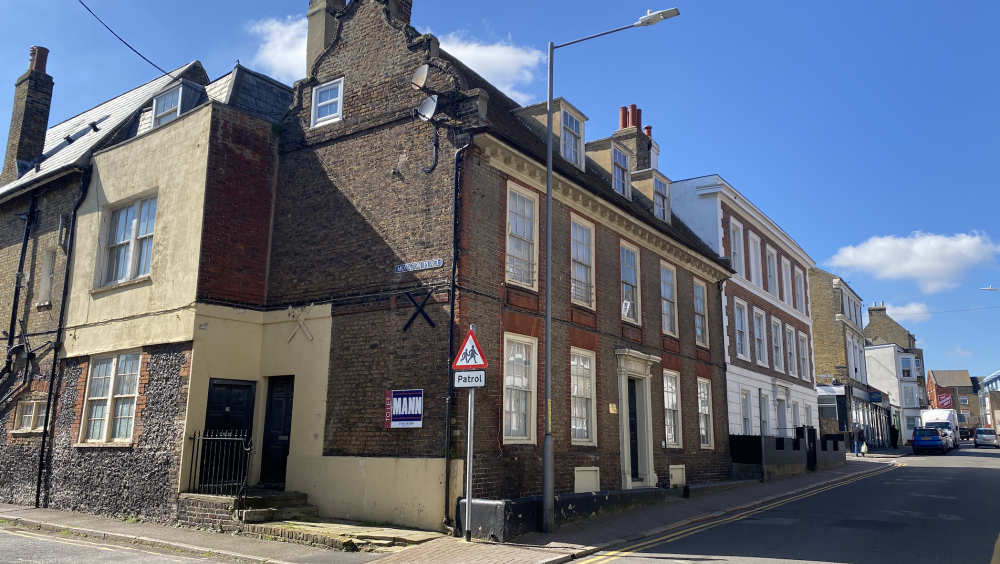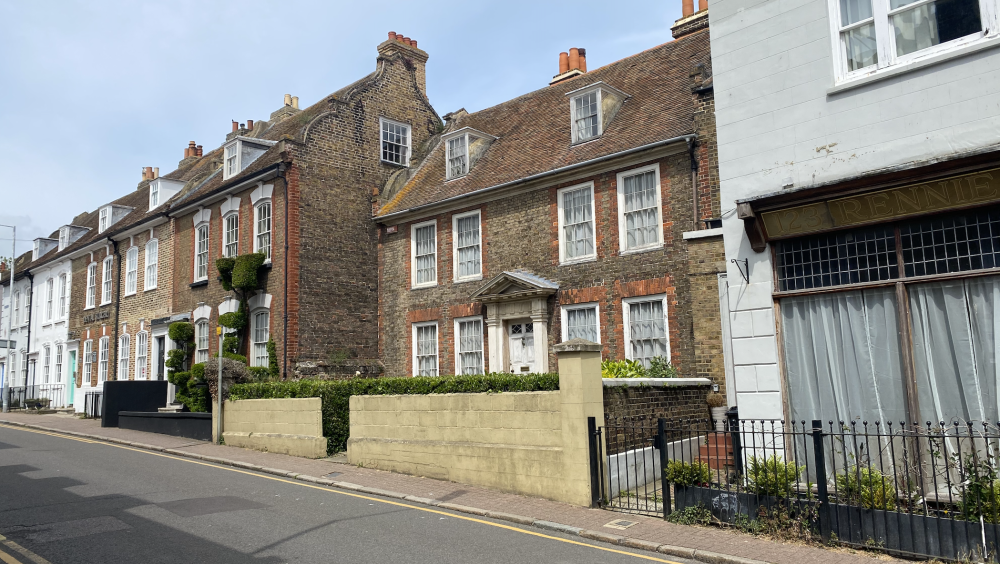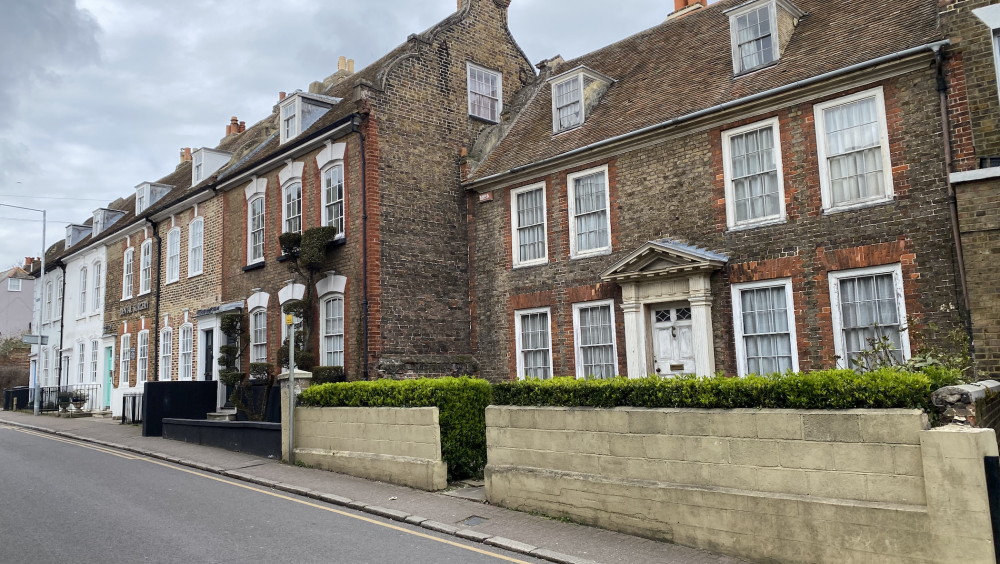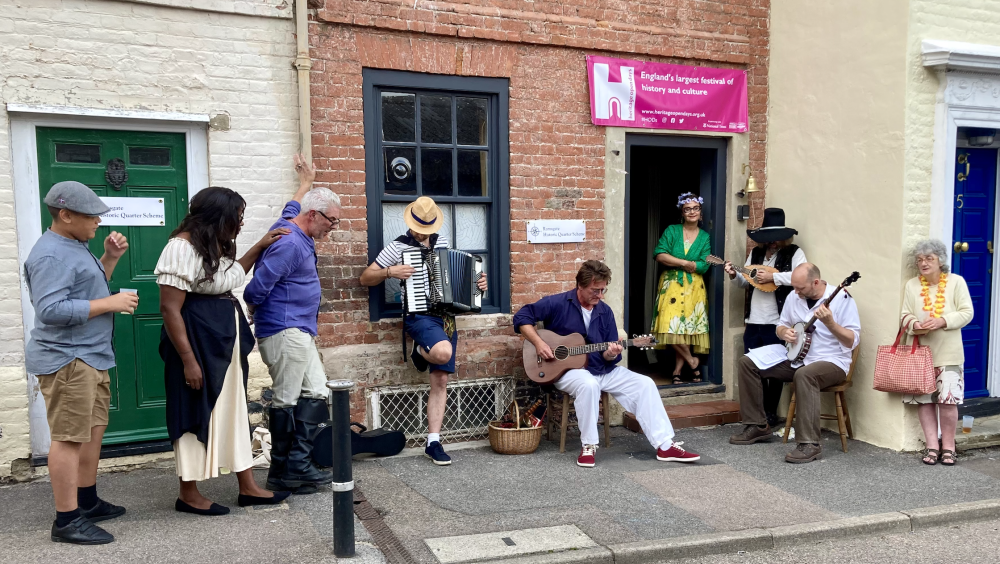The Ramsgate Historic Quarter town regeneration scheme
On the coast of England there is a place called Ramsgate that has been linked with Europe since the Bronze age. The Romans landed here as did the Anglo Saxons and St Augustine who brought Christianity. In the 1800’s it was a spa town frequented by anyone who was anybody and it has a wealth of fine architecture. White stucco terraces dating from its belle epoque in the Regency period proudly line the cliffs overlooking the harbour. However, it is the Dutch gabled mansions built in the 1700’s when Ramsgate was a busy seaport that are the forgotten gems. The sea captains made fortunes trading with the Baltic whilst shipwrights built their houses of red brick, flint and timber. Today, the town has fallen on hard times, visitors are few and there is widespread deprivation. What began as a resident’s association to improve the neighbourhood has turned into an organised campaign. Recognising the value of architectural heritage in terms of quality of life and its draw for visitors, volunteers set about clearing the street of litter, reintroducing heritage lighting, and creating a community garden. Responding to the scarcity of the old skills a heritage building skills workshops were scheduled. This is heritage led town regeneration, and the area is now known as the Ramsgate Historic Quarter. On September 13th the public will be welcomed into some of the historic houses for tours and there is more online. Though our connection with the continent goes back thousands of years the current political climate has isolated the UK. The EHD festival is a wonderful way to connect with our contemporaries across Europe. In sharing and celebrating our common values of pride in our traditional crafts, folk music, food, and all with a smile we are nurturing what it is to be human.
The Ramsgate Historic Quarter scheme is a heritage-led town regeneration project on the southeast coast of England. We are a not-for-profit organisation run entirely by volunteers. Our aim is to highlight the value of our historic architecture in recognition of its contribution to a sense of place, of our culture and identity, and in improving the quality of life for residents as well as attracting the visitors that are so important for the town.
On a fine day the coast of France can be clearly seen from the white cliffs and beaches of the Ilse of Thanet. Julius Ceasar landed here and the Anglo-Saxon tribes that made it England. St Augustine introduced Christianity in 597. At only 30 miles from the continent, it is much closer than London. Today, foreign visitors are limited to language students and yachts seeking shelter in the historic harbour. In the era of cheap flights and the ferry port closed Ramsgate bears the marks of social deprivation, speeding traffic and streets strewn with litter. There is widespread unemployment, especially amongst the young and more recently, fear of migrants and political fearmongering has resulted in increasing isolation from Europe.
After the Napoleonic wars Ramsgate became a fashionable resort town of elegant white stucco terraces overlooking the granite harbour used by King George IV during his trips to Hanover. Its spectacular location and easy access from London by steam packet encouraged visitors including the romantic poet Samuel Taylor Coleridge, Charles Darwin, Karl Marx, Friedrich Engels and Vincent van Gogh, who taught at a local school.
In the 17th and 18th centuries Ramsgate had made its fortune through trade with the Baltic nations importing timber and salted fish from Norway and furs and tar from St Petersburg. On the hill above the town the affluent sea captains built their houses from locally fired red brick and flint, a resource in plentiful supply in this region of chalk. Handmade ‘Kent peg’ tiles can still be seen on the rooves with their distinctive Dutch gables, a fashion introduced by the Huguenot immigrants escaping religious persecution in France and Holland in the late 17th century. Some of the houses still have Delft tiles that were used as ships ballast on the journey home. These houses were modern and functional, with cupboards built into the walls around the chimney stack, bread ovens and inglenook fireplaces supported by Baltic pine bressummers. Built by shipwrights they resemble ships in both construction and design. Three of the cottages are supported by a colossal ship’s mast identified by the notches cut in it for the rigging. Ships timbers were often salvaged from the numerous shipwrecks in the infamous Downs, a perilous group of submerged islands just off the coast.
On the 13th of September the RHQS Heritage Open Day will take place in Paradise, a street of early 18th century cottages, so named because it was situated between a brewery and a priory. There will be tours of the participating houses by guides in period costume pointing out architectural features and giving an account of what life would have been like for the people who lived here. In the afternoon our folk band ‘Men of Chalk’, will play traditional instruments and sing sea shanties and slave songs. 18th century maps and illustrations will form part of a mounted exhibition showing the buildings that have survived and those that have been lost. There are many period features, a stone kitchen sink, pewter on the mantlepiece and 18th century furniture in everyday use. School children particularly will wonder if the ominous sounds coming from the attic are creaking timbers or made by the ghost of the sea captain who lived there.
To our surprise, last year saw the number of visitors coming through the doors exceed 250 and the event undoubtedly brought the immediate neighbourhood closer together. The old gentleman at number 5 lost his wife to cancer last year and another his husband of 20 years. Visitors from the continent are particularly welcome this year with the organisers keen to forge ties with other European groups to augment historical research or just make friends over tea and cake or a glass of beer donated by the local brewery.
The RHQ scheme is run by the resident’s association and manned entirely by volunteers. Our heritage open day event is not just limited to architecture. Our other initiatives include plans to create a garden on derelict land dedicated to Captain Abbott whose house stood on the site. This will be a micro-park for the local community with disabled access, as well as an educational space for school children with an information board and QR code links to more material online. We also plan to reintroduce heritage lighting to replace the motorway style lamp standards that have been found to encourage speeding in the area. Since the three lanterns on Paradise were put in place there has been a noticeable reduction not only of speeding but littering and fly-tipping. Following our open day in September we will have our first workshop of our heritage building skills school to train more people in the use of traditional brickwork, flint work, lime pointing and rendering, carpentry and roofing skills. We are discussing a collaboration with the Scuola di specializzione SSIBAP in Venice to share new conservation practices and discuss student exchange programs.
Our historic buildings are not just about the past but for today and the future. There is much they can teach us about how we live our lives. They remind us of where we come from, a time when tradesmen took pride in their work, when life was sustainable, food was grown locally and where communities relied upon one another for their survival through collaboration and the exchange of goods and ideas. In 2025, with world politics becoming more polarised, our architectural heritage offers us so much, not least in reminding us of the shared cultural values that unite us.
The Ilse of Thanet's relationship with the continent goes back thousands of years through migration and trade. Yet the flag of the European Union no longer flies over the harbour and visitors from the continent are today limited to passing yachts and language students. Of grave concern is the absence of European law. Can we rely on our national government to protect our architectural heritage or the natural environment when their primary interest is a growing economy? With higher costs on imports from Europe alternative sources for food must necessarily be found. In search of new markets cargo night flights from the local airport are planned to North America, Asia and Australia. No doubt resulting in a massive increase of air and noise pollution leading to sleepless nights for residents and a negative impact on the tourist economy. The role of Ramsgate as a seaport is a European story and we would especially like to connect with groups amongst our historic trading partners like St Petersburg in Russia. Perhaps we can make friends at the forthcoming Tall Ships festival in June. In planning his own navy Tsar Peter the Great visited England in 1698 to learn about ship building and navigation techniques. From Holland and France Huguenot refugees brought silk weaving and land reclamation expertise as well as their distinctive architecture. Our heritage is a shared heritage developed over the centuries and maritime history well documents the developing relationships between different cultures. We can celebrate that legacy at our EHD event on September 13th with tours of our historic houses, information about what life was like for the occupants in the 18th century and through the sea shanties and Russian folk songs sung by our traditional folk band with a glass of beer and a home baked sea biscuit.





